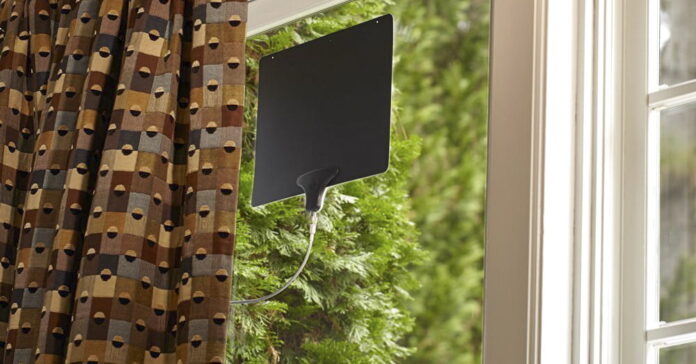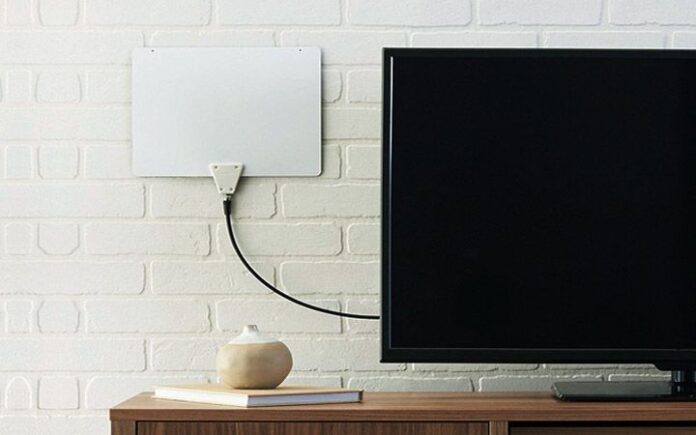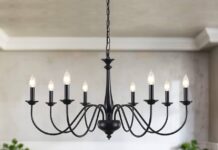If you live in an apartment building or if placing one on the roof isn’t an option, you could always install an indoor TV antenna that’ll grant you access to various programs. However, when placing an aerial, your location, the extent of the structures around it, as well as the placement of the device all have a crucial role when it comes to the signal you’ll get.
But, if you never had to install such a device before, you’re probably wondering – how could I easily place it in my home while ensuring that the signal is clear and stable? Luckily for all, the article below might help you. Let’s take a look at the steps you’ll need to take:
Step 01: Opt For The Right Device

Before you could do anything else from this list, the very first thing that you’ll have to do is to choose an indoor antenna that’ll fit your needs. They do come in various models, dimensions, and shapes, as well as with different features such as an amplifier that could pick up weak signals.
Now, in order to determine what is fitting for your home, you have to make a list of potential devices and then take a look at their price, features, and strength. Don’t forget to read all the reviews for each device and compare everything so that you could determine which model suits your needs.
Step 02: Setting it Up
Once you purchase the device, you’ll be required to plug the antenna into the receiver box you have or into the back of the television set. Keep in mind, some antennas are omnidirectional, which means that you don’t need to worry about pointing them in the direction of the regional broadcasting towers. Nonetheless, you’ll have to place it in an upright or straight position.
To determine how you should place it, you can take a peek at the aerials located around your apartment building or residence and then place your antenna in the same direction. If you have a brand-new TV or receiver, you’ll have to tune into the regional programs. Now, you won’t yet know the location of your antenna, which means that the reception could be bad at first.
To solve this issue, you could try connecting the TV or box to a functioning connection in another area in your apartment or home, and then try tuning into the programs. Additionally, you can always take the device to a family member’s home and then tune into their antenna.
Step 03: Properly Positioning The Device

You should turn on a Freeview program – “BBC One” is the most suitable option – and then you should begin slowly relocating the device around your room. This will allow you to determine where the signal is best. In most situations, the device will function properly close to a window. Keep in mind, if your window is further from your TV, you may have to purchase an extension cord.
Additionally, you also require wires that have “female” and “male” connectors, however, if you’re unsure of what cables you’ll have to buy, you can always opt for hiring an expert such as mikeharrisaerialandsatellite.co.uk that’ll help you with determining what you require. Lastly, the indoor antennas are not the prettiest out there, so, you may want to hide them in some way.
Step 04: Obtaining All The Programs
All the digital programs are merged into 6 categories, most commonly referred to as multiplexes and they’re transmitted at various wavelengths all over the airwaves. If your reception is bad in a specific band, it can possibly mean that you’re missing out on all the programs that you could obtain.
Again, if you want to verify whether or not you have access to all the channels, you should tune in to Freeview programs such as ITV, QVC, or BBC. If you chose a high-quality antenna, you should have these channels, however, the ones you could watch will depend on your location.
Step 05: Mounting The Device

Once you find the perfect location for the indoor antenna, it is extremely important that you properly secure it in order to get high-quality and continuous reception, hence, it is best if you mount the device to secure the position. Some of the things that you could use include adhesive tapes or Blu-tack. If your antenna has a wall mount, it’ll be simpler to hide it.
What Happens if The Signal is Bad?
Even if you follow the steps above, some antennas cannot provide you with a good signal. This could occur for a wide range of reasons including tall buildings around your residence, objects made of metal that are hindering the signal, or tall trees between your residence and the broadcasting towers. If you cannot fix the reception, there are various thing that you can try, including:
- Moving The Aerial Higher – the first thing you should try doing is to move your antenna higher. For instance, if you placed it near your window and head height, try moving it further up. Keep in mind, the further it is from the TV, the more cable length you’ll need, so ensure that you have it.
- Position it Properly – perhaps your reception is bad because you didn’t point the device in the right direction. Again, take a look at the other aerials near you and try positioning your aerial in the same way. Also, you can find out where the nearest broadcasting towers are and point your device in their direction.
- Remove Objects Made From Metal – metal can easily disrupt the signal. So, if you have any appliances, decoration made of metal, or anything else metallic around the aerial that could possibly hinder the signal, ensure that you remove it from the vicinity of the device.
Conclusion
Although a lot of people think that installing an indoor antenna is difficult, the entire process is actually quite easy. And, if you choose to follow all of the steps mentioned in the list above, you’ll be able to properly, quickly, and efficiently install an aerial inside of your home.
So, now that you’re aware of all the steps you’ll need to take, you should not lose any more of your time. Instead, you should go back to the beginning of this list and start with the first task we mentioned – which is figuring out what type of indoor antenna you’ll need for your TV.






